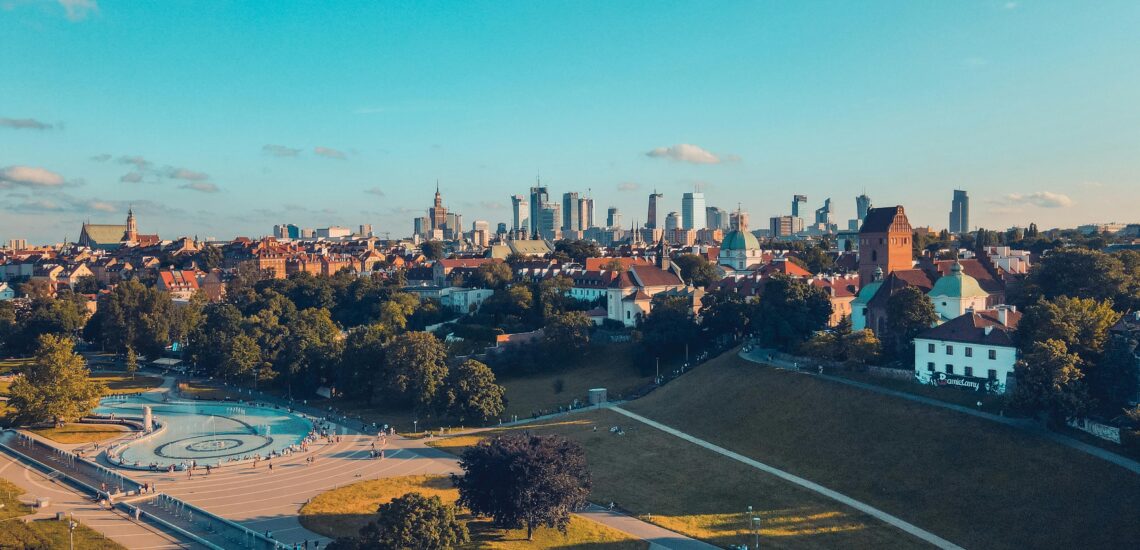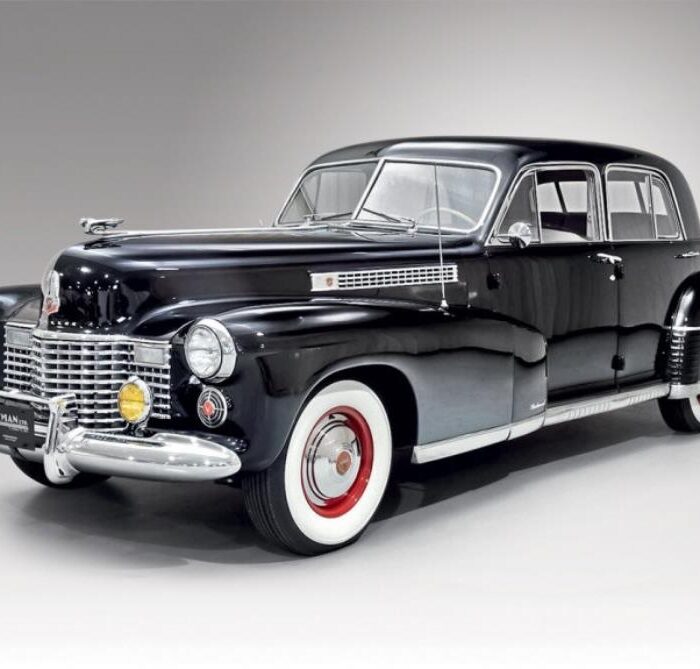Nestled in the heart of Europe, Poland stands as a captivating mosaic of diverse landscapes, rich history, and a tapestry of unique traditions. From the peaks of its majestic mountains to the golden shores of its beaches, Poland unfolds a story that is both intricate and compelling.
1. Poland in the top 10 largest countries in Europe
Poland holds the impressive rank of being the 9th largest country in Europe. This means it’s a pretty substantial piece of real estate on the European continent. To give you a sense of scale, Poland covers a diverse range of landscapes, from the picturesque Carpathian Mountains in the south to the Baltic Sea coastline in the north. In between, you’ll find rolling plains, deep forests, and a network of lakes.
2. The name “Poland” (Polska) has a meaning
The name “Poland” (Polska in Polish) is more than just a label; it carries historical and cultural significance. The word “Polska” is derived from the Polanie, an early Slavic tribe that played a crucial role in the formation of the Polish state. “Polanie” itself is believed to come from the Polish word “pole,” which means “field” or “plain.”
3. Polish history is very complicated
The story of Poland is like a rollercoaster ride with ups, downs, twists, and turns. Here are some key points that contribute to the complexity of Polish history:
- Partitions of Poland: Poland was once a powerful kingdom, but in the late 18th century, it faced a series of partitions by neighboring powers—Russia, Prussia, and Austria. This led to the disappearance of Poland from the map for 123 years.
- Rebirth of Poland: Despite these partitions, Poland managed to regain its independence in 1918 following World War I. The interwar period saw a democratic Poland, but this was short-lived due to the outbreak of World War II.
- World War II: Poland was the first victim of World War II, facing brutal invasions by both Nazi Germany and the Soviet Union. The destruction was immense, especially in cities like Warsaw, which was almost completely razed during the war.
- Communist Era: After World War II, Poland fell under Soviet influence and became a communist state. This period lasted until the late 1980s when Poland, along with other Eastern Bloc countries, underwent a series of transformations leading to the end of communism.
- Solidarity Movement: The 1980s saw the rise of the Solidarity movement, a trade union that played a crucial role in challenging the communist regime. This eventually led to the first semi-free elections in 1989 and the fall of communism in Poland.
- European Union and NATO: In the 21st century, Poland became a member of the European Union in 2004 and joined NATO in 1999, signaling a new chapter in its history.
This whirlwind of events showcases the resilience and determination of the Polish people in the face of adversity. The complexity of Polish history reflects a nation that has faced numerous challenges but has managed to overcome them, shaping the vibrant and diverse country we see today.
4. Poland’s constitution was the 2nd in the world
Poland’s Constitution of 3 May 1791 was the world’s second modern constitution, following the United States. Adopted during the Great Sejm, it aimed to modernize governance, inspired by the U.S. Constitution. Though short-lived due to opposition and external pressures, it remains a symbol of early Polish commitment to democratic principles.
5. Polish engineer invented the Modern Kerosene lamp
A Polish engineer, Ignacy Łukasiewicz, invented the modern kerosene lamp in the mid-19th century. This brighter and safer lighting solution had a significant impact on daily life, especially in areas without electricity.
6. During WWII, Warsaw was almost completely destroyed and had to be rebuilt
During WWII, Warsaw was heavily damaged and almost entirely destroyed. After the war, the city underwent significant reconstruction efforts, symbolizing resilience and determination. Today, Warsaw stands as a blend of historical restoration and modern development.
7. Marie Curie was actually Polish
Marie Curie, born Maria Skłodowska in Warsaw, Poland in 1867, was a pioneering scientist. She later moved to Paris, where she conducted groundbreaking research on radioactivity. Marie Curie, the first woman to win a Nobel Prize, was awarded two Nobel Prizes, in Physics (1903) and Chemistry (1911). Despite spending much of her life in France, her Polish origins were foundational to her early education and career.
Adrian Grycuk, CC BY-SA 3.0 PL, via Wikimedia Commons
8. Poland has a wide variety of landscapes
Poland has it all: beaches along the Baltic Sea, mountains in the south, expansive forests covering 30% of the country, sand dunes creating desert-like landscapes, and numerous lakes, including the famous Masurian Lake District. The diversity of landscapes makes Poland a versatile and attractive destination.
9. Europe’s largest animal in the wild lives in Poland
Poland is home to Europe’s heaviest land animal in the wild, the European bison. These majestic creatures, also known as Wisents, freely roam in places like Białowieża Forest, showcasing successful conservation efforts in the Poland and Belarus.
Charles J. Sharp , CC BY-SA 4.0, via Wikimedia Commons
10. Poland was home to the world’s tallest structure
Poland held the record for the world’s tallest structure with the Warsaw Radio Mast, soaring to a height of over 646 meters. Unfortunately, it collapsed in 1991 during maintenance, marking the end of its reign as the tallest structure globally.
11. Poland has the largest castle in the world
Poland boasts the world’s largest castle, Malbork Castle. Constructed by the Teutonic Knights in the 13th century, it spans over 21 hectares, showcasing impressive Gothic architecture. This monumental structure is not only a prime example of medieval craftsmanship but also a testament to a rich history that encompasses military and cultural transformations.
Diego Delso, CC BY-SA 3.0, via Wikimedia Commons
12. Wearing a hat indoors is considered rude in Poland
Wearing a hat indoors is considered impolite in Poland. This cultural norm is rooted in traditional etiquette, where removing one’s hat upon entering a home or any indoor space is a sign of respect. It’s a gesture that shows acknowledgment and consideration for the space and the people within it.
13. Kissing a woman’s hand is still in fashion in Poland
Kissing a woman’s hand is a gesture that is still in fashion and holds cultural significance in Poland. This traditional practice is a sign of respect and politeness, often seen in formal settings or as a polite greeting. It reflects an old-world charm and etiquette that continues to be observed, particularly in more formal or traditional social contexts. While customs can evolve, this gesture remains a notable and appreciated part of Polish etiquette.
Konrad Wąsik, CC BY 3.0, via Wikimedia Commons
14. Poles celebrate a Name day
In Poland, celebrating a Name Day is a tradition where each day is linked to specific names, often corresponding to saints’ feast days. People celebrate their Name Day similarly to birthdays, receiving well-wishes and sometimes hosting gatherings. It’s a unique and socially significant tradition in Polish culture.
15. Poland is the world’s biggest exporter of Amber
Poland holds the title of being the world’s biggest exporter of amber. This fossilized resin, often containing prehistoric plant material or insects, is highly valued for its use in jewelry and decorative items. Poland’s Baltic Sea coastline, especially the region around Gdańsk, is renowned for its rich amber deposits. The trade of amber has been a significant part of Poland’s cultural and economic heritage for centuries.
Ministry of Foreign Affairs of the Republic of Poland, (CC BY-NC 2.0)
16. Mushrooming is a popular family activity in Poland
Mushrooming is a popular family activity in Poland, especially during the autumn season. Families venture into the forests to forage for various mushroom varieties, fostering both outdoor enjoyment and a culinary tradition. It’s a time for bonding and sharing knowledge about edible mushrooms, although caution is exercised due to the presence of toxic species.
17. You can still eat at Europe’s oldest restaurant in Wroclaw
In Wroclaw, Poland, you have the opportunity to dine at Europe’s oldest restaurant. Situated in this historic city, the restaurant carries a fascinating legacy, providing not just a meal but a journey through time. With centuries of culinary tradition, it stands as a living testament to Wroclaw’s commitment to preserving its historical and gastronomic treasures.
Klearchos Kapoutsis, (CC BY 2.0)
18. You can’t bring an even number of flowers to a funeral
In Poland, it’s considered inappropriate to bring an even number of flowers to a funeral. Odd numbers are culturally more fitting as they symbolize respect and solemnity.
19. Latex condoms were invented by a Poles
Julius Fromm, a Polish-German entrepreneur, made a groundbreaking contribution in the early 20th century by inventing latex condoms. His innovation involved developing a method for producing seamless, rubber condoms using latex. This invention revolutionized contraception, offering a more reliable and comfortable option compared to earlier materials. The legacy of Julius Fromm’s work continues to impact public health and reproductive technologies worldwide.
OTFW, Berlin, CC BY-SA 3.0, via Wikimedia Commons
20. Poland is one of the most religious countries in Europe
Poland is widely considered one of the most religious countries in Europe, with the majority of the population identifying as Roman Catholic. High church attendance and the influence of religious traditions contribute to the strong connection between faith and daily life in the country.
21. Poland has one of the world’s oldest salt mines
Poland boasts the Wieliczka Salt Mine, one of the world’s oldest, with a history dating back to the 13th century. This UNESCO World Heritage site near Krakow attracts visitors with its underground chambers, chapels, and intricate salt sculptures.
Diego Delso, CC BY-SA 3.0, via Wikimedia Commons
22. Vodka originated in Poland
Poland is the birthplace of vodka, with a history dating back to the early Middle Ages. The traditional production involves distilling fermented grains or potatoes, making Polish vodka renowned globally for its quality and cultural significance.
23. Poles marry the youngest in Europe
Poland stands out in Europe for having one of the youngest average ages for marriage. Cultural factors and the importance of family likely contribute to this trend.
Bieniecki Piotr, CC BY-SA 4.0, via Wikimedia Common
24. One of Warsaw’s symbols, the Palace of Culture and Science, many Poles want to demolish it
The Palace of Culture and Science in Warsaw, a symbol of the city, is a complex and controversial structure. Built during the Soviet era, it is associated with historical and political complexities. While some Poles advocate for its demolition due to its ties to a difficult period, others appreciate its cultural significance, creating an ongoing debate about its place in Poland’s narrative.
25. Poland has taken in more refugees from neighboring Ukraine and Belarus than any other country
Poland has accepted refugees from neighboring Ukraine and Belarus, but its approach to refugees from Islamic countries is more selective. Factors like cultural differences and integration concerns play a role in shaping the country’s refugee policie
EU Civil Protection and Humanitarian Aid, (CC BY-NC-ND 2.0)
26. Nicolaus Copernicus is the pride of Poland
Nicolaus Copernicus is a pride of Poland, celebrated for his revolutionary contributions to astronomy, including the heliocentric model. He stands as a symbol of scientific achievement and intellectual courage in Polish culture.
27. Europe’s biggest music festival in Poland
Poland hosts the Woodstock Festival, one of Europe’s largest open-air music events, near the Polish-German border in Kostrzyn nad Odrą. Notably, it’s known for free admission, diverse musical lineups, and a focus on social and cultural engagement. The festival, inspired by the original Woodstock, attracts massive crowds and stands out for promoting values of peace, love, and music.
Ralf Lotys (Sicherlich), CC BY 4.0, via Wikimedia Commons
28. Hot beer is popular in Poland in the winter!
Known as “grzane piwo” in Polish, it involves heating beer with various spices, such as cloves and cinnamon. The warm and spiced beer is enjoyed during the colder months, providing a comforting and festive drink for winter celebrations. It’s a distinctive part of Polish winter traditions, offering a cozy alternative to cold beer during the chilly season.
29. University is free in Poland
Poland offers free university education for Polish citizens in public higher education institutions. However, there may be fees for certain specialized programs or for non-European Union (EU) international students.
Kgbo, CC BY-SA 4.0, via Wikimedia Commons
30. Polish is one of the most difficult languages in the world
Polish is considered challenging due to its complex grammar, diverse phonetics, intricate word formation, and unique vocabulary. Learning Polish can be rewarding but requires dedication and practice.
Check if you need an International Driving Permit to rent and drive a car in Poland if you plan to travel around the country on your own car.

Published November 25, 2023 • 11m to read





